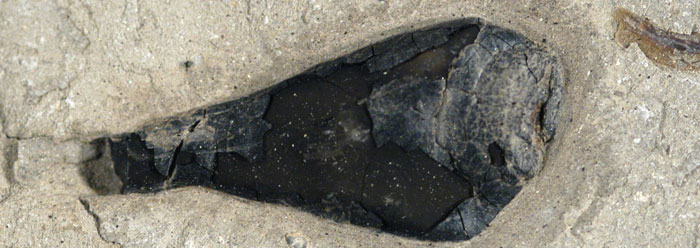In August of 2009, the Institute for Creation Research reported that UK paleontologists found intact ink sacs within squid fossils.1 The ink appeared largely unaltered, and the scientists used it to draw a picture of how the extinct squid variety would have appeared in real life. Now, a new team of researchers, publishing in the Proceedings of the National Academy of Sciences, reports that the ink is almost an exact match with modern cuttlefish ink. The age implications of this find are clearer now than ever.
These researchers subjected the fossil squid ink from two samples to eight different tests to verify as accurately as possible its chemical makeup.2 One technique involved vaporizing tiny samples for analysis in a mass spectrometer, which reveals the unique mass-to-charge ratio of individual particles. This data showed, according to the authors, “that both extant [living cuttlefish] and fossilized ink samples are composed of eumelanin.”2
Eumelanin—a biochemical with a complicated structure—is an abundant pigment that serves many purposes in animals and other organisms, including darkening a mammal’s skin and hair. It is also notoriously difficult to work with in the lab since it refuses to dissolve in common solvents. However, because all systems tend to become disordered over time, no knowledgeable chemist or physicist would expect eumelanin’s complicated structure to have persisted for 160 million years—the age assignment given to the rock formations containing the fossil ink sacs.3
Read More: Fresh Fossil Squid Ink 160 Million Years Old? | The Institute for Creation Research























Thanks! Share it with your friends!
Tweet
Share
Pin It
LinkedIn
Google+
Reddit
Tumblr